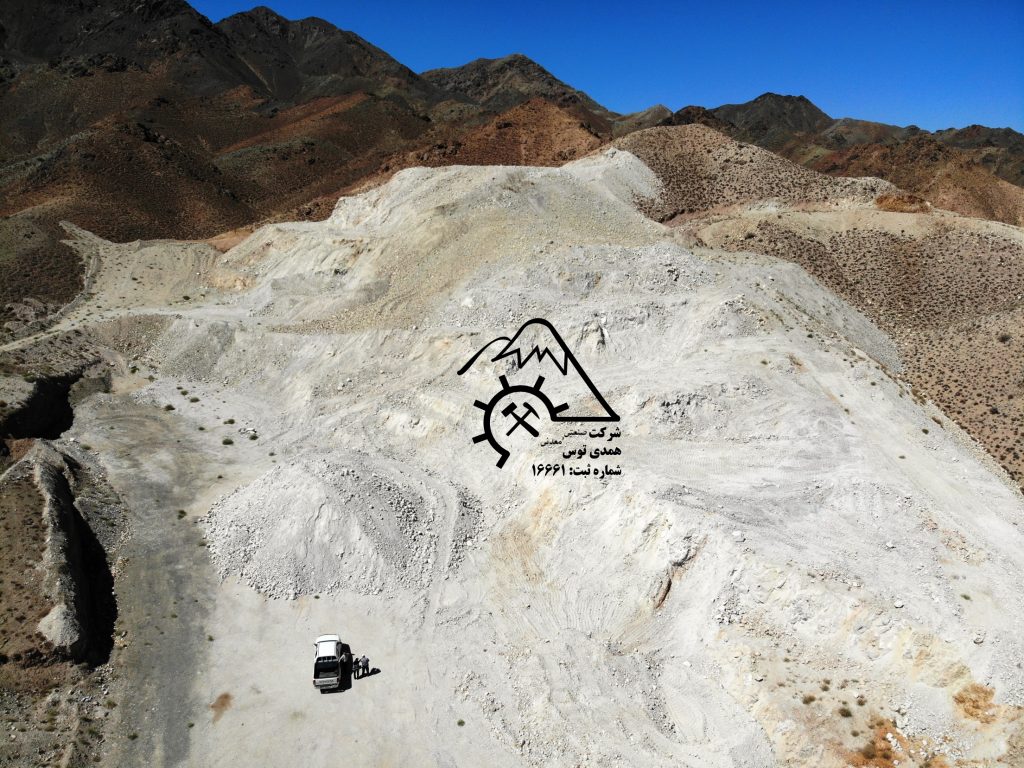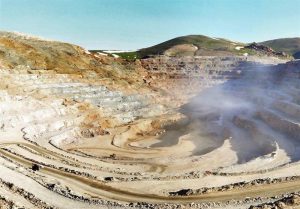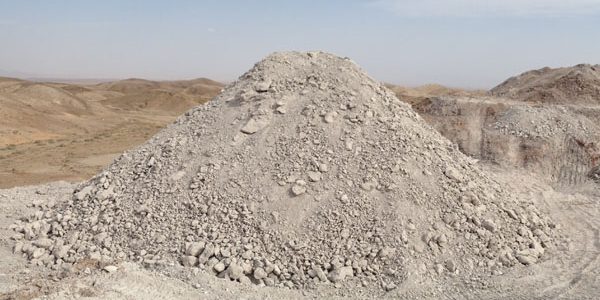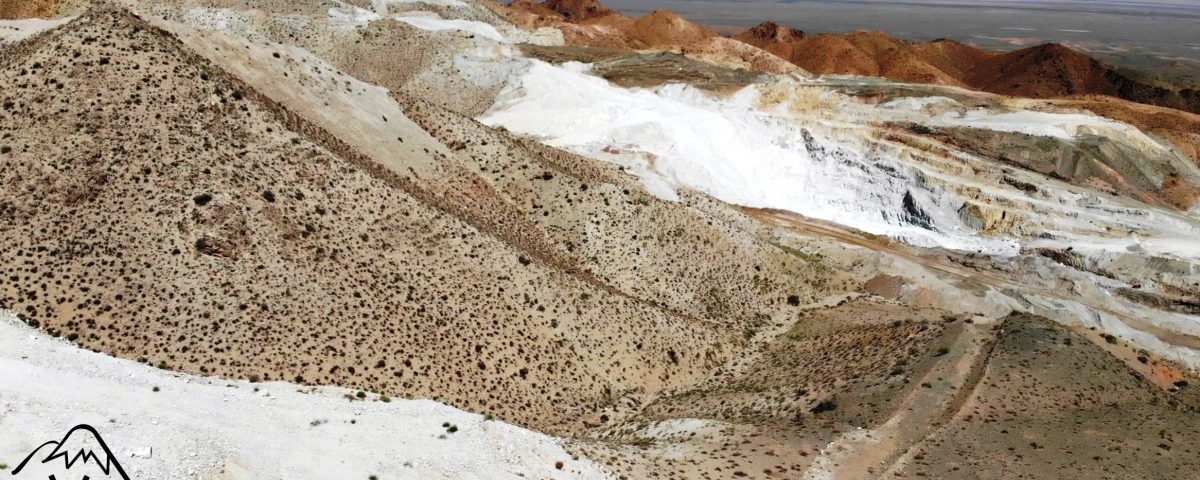
Types of kaolin reserves
November 3, 2020
زندگی در کنار کائولنها
November 12, 2020انواع خاک های صنعتی

Industrial soils are basically soils that are widely used in industry due to their special composition with properties and properties such as white color, lightness, high hardness and.. These soils, unlike ordinary soils, are the result of erosion Stones Are formed under certain conditions and are mined. Industrial soils are categorized according to their application and each is placed in a group that is suitable for a specific job.
Division of industrial soils and clays in industry
هر کشوری با توجه به توسعه یافتگی محصولاتی که مواد اولیه آنها وابسته به رس است و نگاهش به صنعت، برای خود یک دستهبندی برای رسهای صنعتی دارد. ایالات متحده که سابقه طولانی در به کارگیری خاکهای صنعتی دارد انواع خاکهای صنعتی رسی را به شکل زیر دستهبندی میکند. این دستهبندی در برخی از کشورهای دیگر هم بهکار گرفته میشود. خاکهای صنعتی یا رسها در این دستهبندی در شش گروه قرار میگیرند:
در ایران با توجه به منابع خاکهای صنعتی و رسها و کاربری آنها توصیه میشود که خاکهای صنعتی به شکل زیر دستهبندی شوند: 1) رسهای کائولینیتی و نسوز، 2) رسهای بنتونیتی و 3) رسهای معمولی یا نیمه صنعتی.
خاک رس
از واژه رس، بسته به کاربرد آن، چنین برداشتهایی میشود:
- از دیدگاه کانیشناسی به گروه خاصی از خانواده کانیهای سیلیکاته ورقهای که دارای یون OH- در ساختمان خود هستند، گفته میشود.
- در رسوبشناسی باتوجه به اندازه ذرات تعریف میشود.
- در سنگ شناسی رسوبی به سنگهایی گفته میشوند که یکی از ویژگیهای بالا یا هر دو را داشته باشند.
- در کشاورزی نیز به خاکی که جاذب خوب آب باشد و گیاهان در آن خوب رشد کنند خاک رس اطلاق میگردد.
It is difficult to define clay as a rock, because various other materials are involved in the composition of these stones, and therefore the definition must be somewhat general. For example, it can be said that clay is a natural soil, its material is fine-grained and generally consists of a group of crystalline minerals commonly known as clay minerals and non-clay minerals called allofin. Many clays show ductility if they absorb moisture. Clay, as a term for size, represents the smallest particles. The maximum size of clay grains in different grades has heterogeneous values. In terms of size, particles larger than 2 microns are considered to be the highest particle size limit of clay, while the other scale defines clay as a material with particles smaller than 4 microns. Some clays acquire temperature, hardness, permeability and beautiful colors due to temperature, which makes them used in industry. Clay is used in the manufacture of porcelain, earthenware and bricks. This soil has many uses, but the above are the most important uses of this soil.

خاک کائولن
به جرئت میتوان گفت اصلیترین مادهای که در بسیاری از صنایع مورد استفاده قرار میگیرد خاک کائولن است. واژه کائولن از نام یک کانی رسی به اسم کائولینیت گرفته شده است. کائولینیت (Kaolinite) با فرمول شیمیایی Al2Si2O5(OH)4 یک کانی رسی است و در گروه کانیهای صنعتی قرار دارد. به سنگهایی که غنی از کائولینیت باشند کائولن یا خاک چینی هم گفته میشود. از مزیتهای خاک کائولن میتوان وزن کم و مقاومت بالا، رنگی زیبا و منحصر بفرد نام برد.
Kaolinite-like minerals, including illite, haloisite, and dictite, can be distinguished by X-rays and chemical responses. This mineral can be found in abundance in Germany, the Czech Republic and Slovakia, the United Kingdom, France and China. This soil is often seen in yellow, cream and white colors. Kaolin soil has many uses, some of which are: making plastics, making glazed containers, painting, making adhesives, making paper (to increase the softness of luster and absorb ink) and و

بنتونیت (خاک فولراث یا گل سرشور)
بنتونیت (Bentonite) نوعی رس ریزدانه است که حداقل ۸۵ درصد مونتموریلونیت داشته باشد. بنتونیت یک ماده از دسته رسها و از کانیهای متورم شونده تشکیل شده است که عمدتاً مونتموریلونیت و به مقدار کمی بیدلیت هستند. اکثر بنتونیتها بر اثر هوازدگی و دگرسانی خاکسترهای آتشفشانی و اغلب در حضور آب تشکیل میشوند و سنگ منشأ آنها بیشتر از نوع بازیک است. تجزیه خاکستر آتشفشانی عمدتاً در محیط شور و باتلاقی انجام میشود و هر چه از آتشفشان دور شویم، ضخامت بنتونیت کاهش مییابد. کاربرد این خاک بیشتر در صنعت فولاد، چاه ارت و مصارف درمانی میباشد. بنتونیت دارای ساختمان آلومینوسیلیکاتی است و در دسته سیلیکاتهای سه لایه قرار میگیرد. بنتونیت دارای دو لایه چهار وجهی و یک لایه هشت وجهی میباشد. فرمول عمومی بنتونیت به صورت ذیل میباشد:
(Na, CaO)(Al, Mg)(Si4O10)3 (OH)6 nH2O

خاک نسوز
خاک نسوز اصطلاحیست که برای برخی از خاکهای دیرگداز به کار میرود. این خاکها معمولاً در ساخت آجرهای نسوز کاربرد دارند. در علم سرامیک، به خاکی نسوز گفته میشود که دستکم دمای ۱۵۱۵ درجه سانتیگراد را تحمل کند. این خاکها دارای حدود ۲۳ تا ۳۴ درصد وزنی اکسید آلومینیوم، ۵۰ تا ۶۰ درصد وزنی سیلیس و 10تا ۱۲ درصد وزنی مواد فرار (بیشترش آب) است که حین پخت از ماده خارج میشوند. این خاکها میتوانند تا ۲۵ درصد وزنی اکسید آهن سه (Fe2O3) و مقادیری TiO2 ،CaO، MgO، K2O و Na2O داشتهباشند. خوشبختانه کشور ما ایران یکی از بزرگترین تولید کنندگان خاک صنعتی نسوز در دنیا به شمار میرود. از خاک نسوز در ساخت ظروف چینی و سرامیکی، مقره سازی، الکتروسرامیک، پلاستیک، چسب، لاستیک و… استفاده میشود.

Soil Blackley
Soil Blackley like kaolin, it is a type of clay and differs from kaolin in its high plasticity and lower heat resistance. But there is not much difference in the Soil Blackley and kaolin and only the ratio and amount of silica participating in the composition are different. Soil Blackley composition of the kidneys is often 20 to 80 percent kaolinite, 10 to 25 percent mica and 6 to 65 percent silica (quartz). In addition, other by-products and some carbonate materials of plant origin are present in their composition. Of course, in different sources, other compounds have been mentioned for them that have slight differences, for example, the amount of kaolinite is between 20 to 95%, quartz 10 to 70%, illite and chlorite 5 to 45%, and organic matter, montmorionites, iron compounds, Titanium oxide and soluble salts are considered as its impurities. It should be noted that the amplitude of change in chemical and mineralogical composition as well as the size of the constituent filaments of the composition depends on the different and unique characteristics of the thin clay veins formed within a sedimentary zone. Soil Blackley
In general, a sedimentary clay is of natural origin and is also known as a secondary clay, which means that natural weathering factors have caused it to move from its original place of origin, its natural color can be pale yellow. To change to black, this color change depends on the presence of other minerals in it and other materials with which it has precipitated. In general, a series of rare geological conditions are required for the formation and maintenance of sedimentary deposits in general: These conditions include: B- Erosion of these rocks and transporting them into wetlands or basins of saline or fresh water and continuing erosion until the components become very fine. C- Limited and low erosion of the next slope or deep burial of sediments from the previous stage will eventually cause the formation of total units.
The soil has a dark color due to the presence of organic matter. This soil is often used in pottery. This material is easily dominated and after baking at high temperature, it turns white or close to white, and therefore it can be rightly called one of the useful threads in the ceramic industry.




1 Comment
ممنون از سایت فوق العادتون